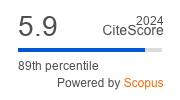Article | Open Access
Science Slams as Edutainment: A Reception Study
| Views: | 8642 | | | Downloads: | 3149 |
Abstract: Science slams are a prominent form of science communication especially in Germany that seeks to entertain. While some view science slams as an excellent vehicle for disseminating knowledge, others argue that the imperative to entertain undermines the scientific value of this form of presentation. Drawing on empirical data from three science slam events, this explorative study examines how audiences and presenters perceive the science slam, particularly as it relates to entertainment and the communication of scientific knowledge. Our multi-method analysis includes audience surveys (n = 469), an eye-tracking study, and interviews with science slammers (n = 18). Our results show that the main reason audiences attend a science slam is for entertainment, yet they also have a strong interest in scientific content. Assessing the slammers’ aspirations concerning the audience, we find entertainment to be an important part, but the motivation to impart scientific knowledge is key for most. When asked to evaluate individual presentations (n = 20), spectators tended to rate both the entertainment and scientific value of the presentations as high. However, in terms of visual attention within individual presentations, spectators spent more time considering scientific content than entertainment content. Overall, we do not find evidence for the common claim that the focus on entertainment undermines the scientific value of science slam presentations—rather, entertainment and scientific content are combined to produce “edutainment” in a positive sense.
Keywords: entertainment; eye-tracking; presentation forms; science communication; science slam
Supplementary Files:
Published:
© Philipp Niemann, Laura Bittner, Philipp Schrögel, Christiane Hauser. This is an open access article distributed under the terms of the Creative Commons Attribution 4.0 license (http://creativecommons.org/licenses/by/4.0), which permits any use, distribution, and reproduction of the work without further permission provided the original author(s) and source are credited.


